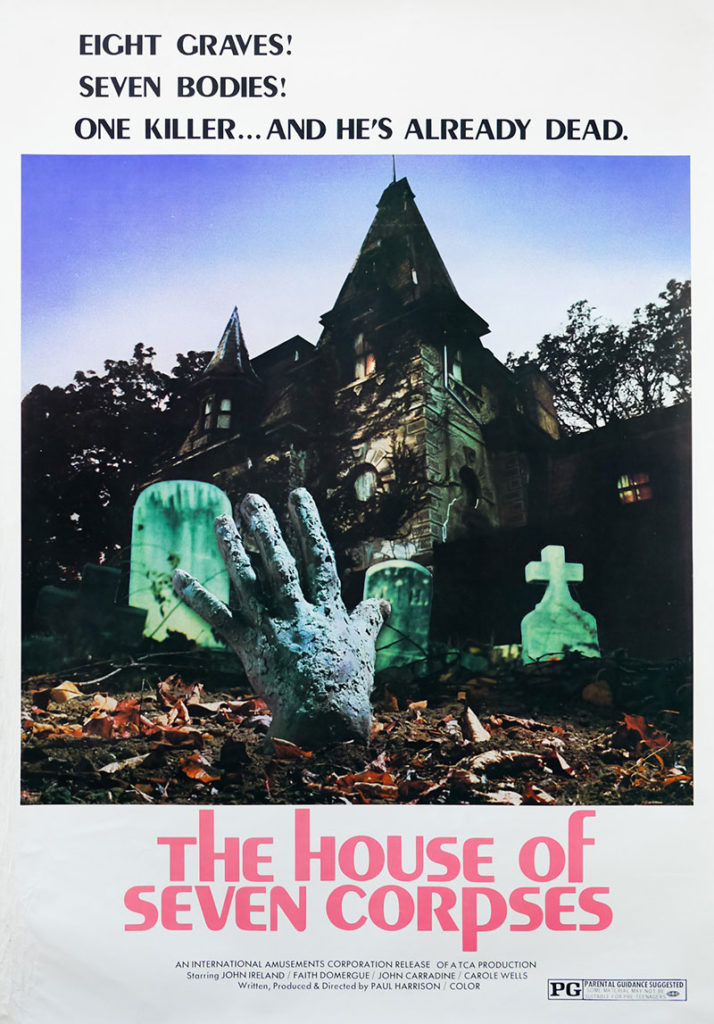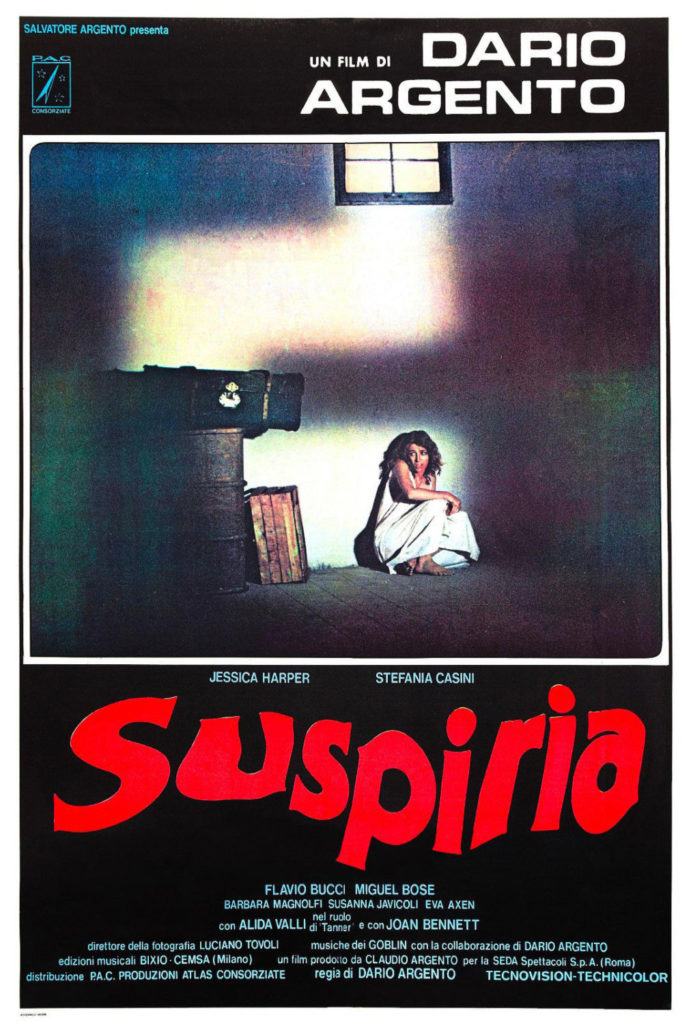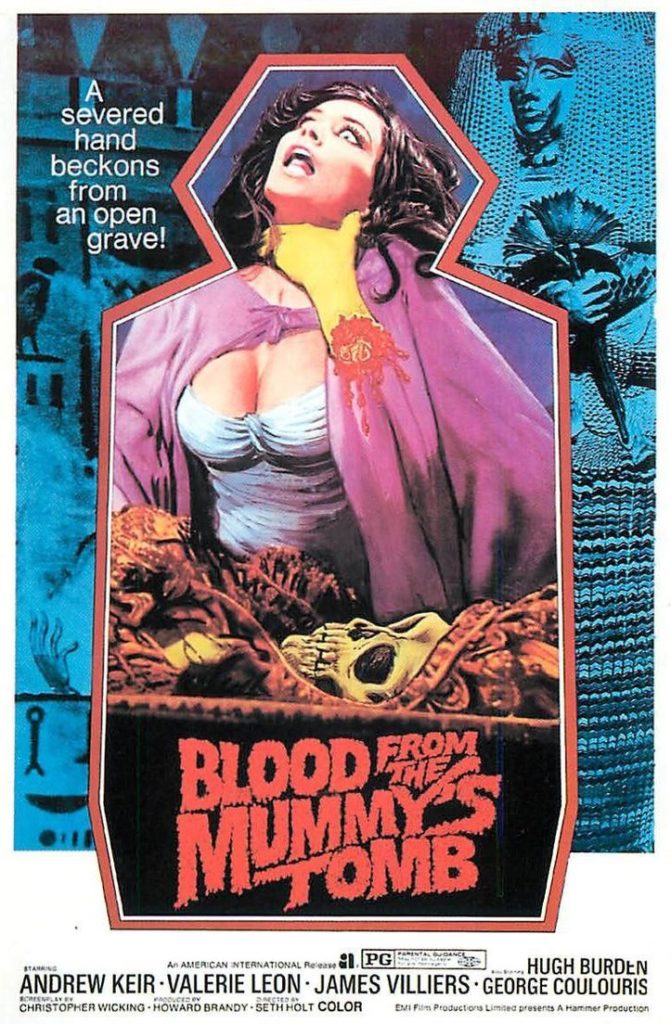Some horror flicks are designed to scare, while others are designed to provoke dread. They are two very distinct emotions. Fear has a crisp flavor, and can be as extreme as panic or as mild as butterflies in one’s stomach. Dread is something more profound. It’s an emotion of desperation and inevitability that makes fear look like mother’s milk. Dread is the certainty, not just the possibility, that something very bad is about to happen. Dread is oppression. Dread is doom. Which makes a film that revolves around dread something of a difficult watch. Continue reading “October Horrorshow: Hereditary”
Tag: Occult Flick
Giant Monstershow: Q — The Winged Serpent
Larry Cohen has had prolific involvement in cheap horror throughout his career. His credits include the screenplay for Maniac Cop and writing and directing credits for both The Stuff and It’s Alive. He was one of the directors featured in the anthology television series Masters of Horror. He also flew by the seat of his pants when it came to making movies. According to the internet, so it must be true, Cohen was fired from his job directing the Mike Hammer flick, I, the Jury, after one week of shooting because of cost overruns. Instead of sulking about losing the gig, Cohen put together a shooting script and a production for a new movie in six days. That movie, lord help us, was Q — The Winged Serpent. Continue reading “Giant Monstershow: Q — The Winged Serpent”
October Horrorshow: A Dark Song
Horror films work quite well when they embrace spectacle. Over-the-top gore and special effects are a hallmark of the genre. But splattering blood all over isn’t the only way to make a horror flick. Sometimes a filmmaker goes for the soul underneath the flesh, and makes something disturbing.
A Dark Song is the feature film debut from writer/director Liam Gavin. From 2016, the film tells the story of two people carrying out occult rites in an isolated house in Wales in order to contact a guardian angel. This is no lightweight ritual, either. As occult expert Joseph Solomon (Steve Oram) explains to the woman who hired him to carry out the ritual, Sophia (Catherine Walker), it will be months before they know if it’s working. During that time, the two will not be able to leave the house, nor will they have any contact with the outside world. Nor could they, as there isn’t any power in the house. Or heat. Did I mention this house is in Wales? Because one would not want to live in an unheated house in Wales. All of this makes the stakes quite a bit higher than something one would see in an old Hammer flick. Continue reading “October Horrorshow: A Dark Song”
October Horrorshow: Inferno (1980)
Three years after horror auteur Dario Argento gave us the vibrant classic Suspiria, he waded back into brilliant color and dreamlike atmosphere by writing and directing Inferno. Described as a thematic sequel to Suspiria, Inferno is the second film of Argento’s Three Mothers trilogy. Whether this film was truly intended to be related to Suspiria or if such a decision was commercial in nature is debatable. Either way, sequel or thematic cousin or whatever, Inferno is clearly an Argento film. Continue reading “October Horrorshow: Inferno (1980)”
October Horrorshow: The House of Seven Corpses
 By 1974, gothic horror films were falling out of fashion. The year saw the last gasps from the major franchises of Hammer Film Productions, with the releases of Frankenstein and the Monster from Hell and The Legend of the 7 Golden Vampires. The genre had come a long way, but by the time this film, The House of the Seven Corpses, was released, seriously bloody slasher horror was making its presence felt. If a filmmaker was going to do gothic horror, it needed to have a twist.
By 1974, gothic horror films were falling out of fashion. The year saw the last gasps from the major franchises of Hammer Film Productions, with the releases of Frankenstein and the Monster from Hell and The Legend of the 7 Golden Vampires. The genre had come a long way, but by the time this film, The House of the Seven Corpses, was released, seriously bloody slasher horror was making its presence felt. If a filmmaker was going to do gothic horror, it needed to have a twist.
Paul Harrison wrote (with Thomas J. Kelly) and directed The House of Seven Corpses. It stars John Ireland as filmmaker Eric Hartman. He has assembled a cast and crew to shoot a gothic horror flick at the old mansion of the Beal family (the mansion is played by the Utah Governor’s Mansion in Salt Lake City). And there’s the twist. It’s a gothic horror movie within a horror movie.
The Beals are all dead by the time Hartman begins shooting his movie, and they all died violently. There being no more Beals, the house is watched over by Edgar Price (John Carradine), a caretaker. Continue reading “October Horrorshow: The House of Seven Corpses”
October Horrorshow: The Ritual
A creepy cabin in some lonely woods. A small cast. A mysterious monster that stalks them. Most of us film fans have seen this movie many, many times. Such a broad outline has spawned hundreds of horror films over the years. Some are good, some are awful, and most are just mediocre. In that, these horror films are like every other film that features well-worn tropes. One can’t expect too much originality, which makes it all the better when something new is to be found. Continue reading “October Horrorshow: The Ritual”
October Horrorshow: They’re Watching
It just doesn’t feel like the October Horrorshow until the first review of a found footage flick has been posted. This year the honor goes to They’re Watching, the 2016 film from writing and directing duo Jay Lender and Micah Wright.
The film follows the crew of a home improvement reality show. They are going back to Moldova six months after the subject of an episode, Becky Westlake (Brigid Brannagh), bought and began to rehab a dilapidated house in the woods. The place looked like a total lost cause. It had been empty for decades. All the glass had been broken. Walls and floors had been exposed to wind, rain, freezing, thawing, vandalism, and everything else that causes an abandoned building to slowly fall apart. The best thing would have been to knock it down and start over. But, when the crew arrives on site, after a somewhat harrowing journey to the house, they find that Becky appears to have done a top-notch job. Continue reading “October Horrorshow: They’re Watching”
October Hammershow: Taste the Blood of Dracula
What a title. Taste the Blood of Dracula. That’s a pretty good start for today’s horror film, before a single frame even goes by. From 1970, Taste the Blood of Dracula was written by Anthony Hinds, directed by Peter Sasdy, and features Christopher Lee returning to play Dracula. Continue reading “October Hammershow: Taste the Blood of Dracula”
October Horrorshow: Suspiria
 A viewer would hard-pressed to find a more beautifully shot, atmospheric horror film than Dario Argento’s Suspiria. Argento’s, and cinematographer Luciano Tovoli’s, vivid production has become legend among horror fans, and for good reason. The film exists within a reality all its own, shifting back and forth between dreamlike and nightmarish, soft and menacing, as the situation requires. No study of horror films, and film in general, is complete without seeing this classic.
A viewer would hard-pressed to find a more beautifully shot, atmospheric horror film than Dario Argento’s Suspiria. Argento’s, and cinematographer Luciano Tovoli’s, vivid production has become legend among horror fans, and for good reason. The film exists within a reality all its own, shifting back and forth between dreamlike and nightmarish, soft and menacing, as the situation requires. No study of horror films, and film in general, is complete without seeing this classic.
From 1977, Suspiria stars Jessica Harper as Suzy Bannion, a dance student who has been invited to study at the prestigious Tanz Dance Academy in Freiburg, Germany. Strange happenings begin immediately upon Suzy’s arrival at the academy (played on the exterior by a real location called The Whale House). She is greeted by a student who is fleeing into the night, and is herself turned away at the door, despite a driving, soaking rain.
Argento didn’t waste any time, packing this first sequence with some of the atmosphere that would come to define the movie. The Whale House is a gaudily painted relic, and the onscreen action is accompanied by an iconic soundtrack by an Italian band called Goblin. Goblin’s music is Mike Oldfield-esque, in that it’s evocative of the opening notes of Tubular Bells, which was used to effect in The Exorcist. Argento liked Goblin’s work for the film so much that he overuses it, pounding the same hook over and over again into the audience’s brains. Continue reading “October Horrorshow: Suspiria”
October Hammershow: Blood from the Mummy’s Tomb, or, Underboob: The Movie
 Hammer, in a wise decision, jettisoned much of the tropes they had used in their previous Mummy films. For three consecutive productions, they had made basically the same film. British archaeologists discover ancient Egyptian tomb, said tomb has a curse on it, ancient Egyptian mummy resurrects and kills those who dared desecrate the tomb. It really was the same thing again and again. That was all well and good when they did it the first time, but by the last film, The Mummy’s Shroud, the plot was too familiar, and everyone involved seemed to be just going through the paces.
Hammer, in a wise decision, jettisoned much of the tropes they had used in their previous Mummy films. For three consecutive productions, they had made basically the same film. British archaeologists discover ancient Egyptian tomb, said tomb has a curse on it, ancient Egyptian mummy resurrects and kills those who dared desecrate the tomb. It really was the same thing again and again. That was all well and good when they did it the first time, but by the last film, The Mummy’s Shroud, the plot was too familiar, and everyone involved seemed to be just going through the paces.
The fourth film, Blood from the Mummy’s Tomb, stays true to only some of the core elements, going so far as to ditch the traditional bandages and rags of films past. In this film, written by Christopher Wicking, loosely adapting Bram Stoker’s novel The Jewel of Seven Stars, the mummy is the perfectly preserved corpse of Queen Tera, who died young and buxom, and thus couldn’t be wrapped in bandages, oh no.
Her tomb is discovered by the requisite British Egyptologists, but they bring the dead queen and her artifacts back to England in secret, rather than placing them in a museum or putting on a tour. That’s because, for reasons that are never adequately explained, some of the party wish to resurrect the queen, so she can rule again. Anyway, the resurrection part is kind of on the periphery, because in the meantime, Queen Tera has a doppelganger in Margaret Fuchs (Valerie Leon, who plays both Margaret and Tera), the daughter of the archaeological expedition’s leader, Julian Fuchs (Andrew Keir). She was born in England at the very moment Queen Tera’s sarcophagus was opened, revealing the scantily clad beauty within. Continue reading “October Hammershow: Blood from the Mummy’s Tomb, or, Underboob: The Movie”
